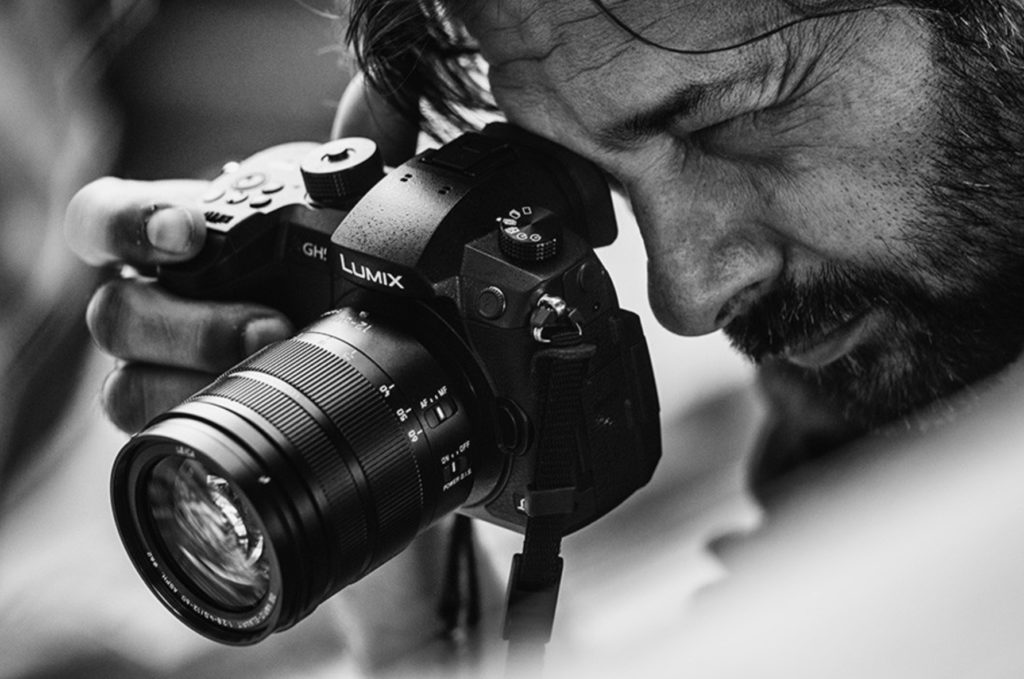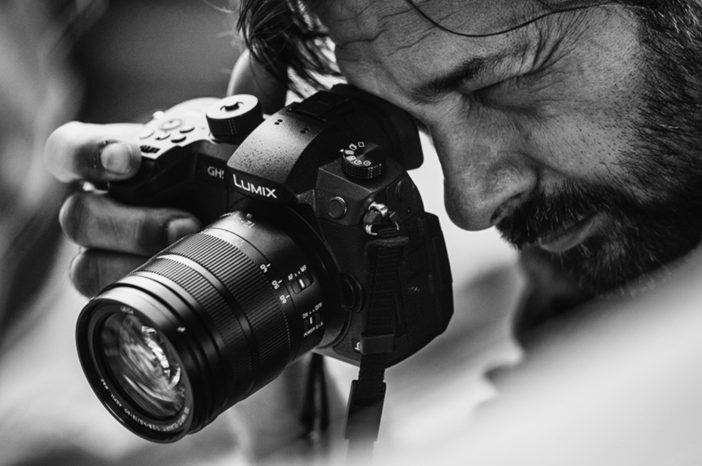Above: Daniel Berehulak, Panasonic GH5
Comment on the forumI talked to Panasonic’s Matt Frazer to clarify the use of H.265 on the Panasonic GH5.
Although the GH5 is still in pre-production (things may change slightly upon release), Matt says all the regular 4K recording modes are H.264. Some have reported that 4K 60fps is H.265 but this was a mistake.
H.265 is still a tricky edit. Graphics acceleration of it is supported by various cards and by the latest Adobe Premiere Pro, but H.264 gives you a few more options, namely ALL-I compression which is even easier on the CPU when editing 4K footage. In the Summer 2017 firmware update, the Panasonic GH5 will get 4K 400Mbit ALL-I (10bit 4:2:2 at 24p, up to 48p – great for slow-mo 24p), using H.264.
By it’s very nature, H.265 is a long-GOP codec which does not store every individual frame as would an ALL-I recording mode. The high bitrate of 400Mbit is nessessary in ALL-I to maintain high quality as you are storing every single frame rather than using clever compression to estimate motion and what frames look like in-between “I” frames in a long-GOP codec. The 400Mbit ALL-I mode on the GH5 will I am sure give a very nice motion cadence and will probably look very similar to the 500Mbit ALL-I MJPEG codec on the Canon 1D C and 1D X Mark II, albiet with slightly more manageable file sizes.
So where does H.265 fit in?
Matt says Panasonic are at the moment using H.265 only for the 6K Photo Mode as a way to compress the very high resolution 18MP images at high frame rates to smaller files without compromising quality. Efficiency is the name of the game here and Panasonic expects this mode to be mainly used in-camera to pull still frames out.
However Matt tells me he assumes the 6K Anamorphic mode uses the H.265 codec as well, because it is essentially the same camera mode in 4:3 aspect ratio. Panasonic’s engineers in Japan haven’t confirmed this directly yet though. In the 6K anamorphic mode, anamorphic lenses get access to the full ‘open gate’ format with greatly increased sensor size and resolution. The GH5 enables recording from the full width (17.3mm) and height of the sensor (13mm) without cropping. That’s a larger anamorphic sensor area than the Sony F55 and puts it in-line with the Sony F65. To go larger than that you’re looking at the Alexa XT or RED Weapon and 65mm.
So to confirm – as it stands right now with the pre-production model, H.265 is only used for the 6K Photo Mode recordings and it is H.264 for all the 4K video modes. Come the final camera and the Summer firmware updates for 6K Anamorphic, we’ll wait and see what happens.
Right now I am fine with H.264 as H.265 HEVC isn’t the best supported in current software. The Samsung NX1 has been shooting H.265 for a while but only recently did it become editable in Adobe Premiere Pro natively and I still often convert this to ProRes in EditReady to get more fluid playback performance. I can see H.265 becoming of use in security cameras where very long recordings at high resolution are a necessity or for event shooters to keep file sizes down in 4K.





